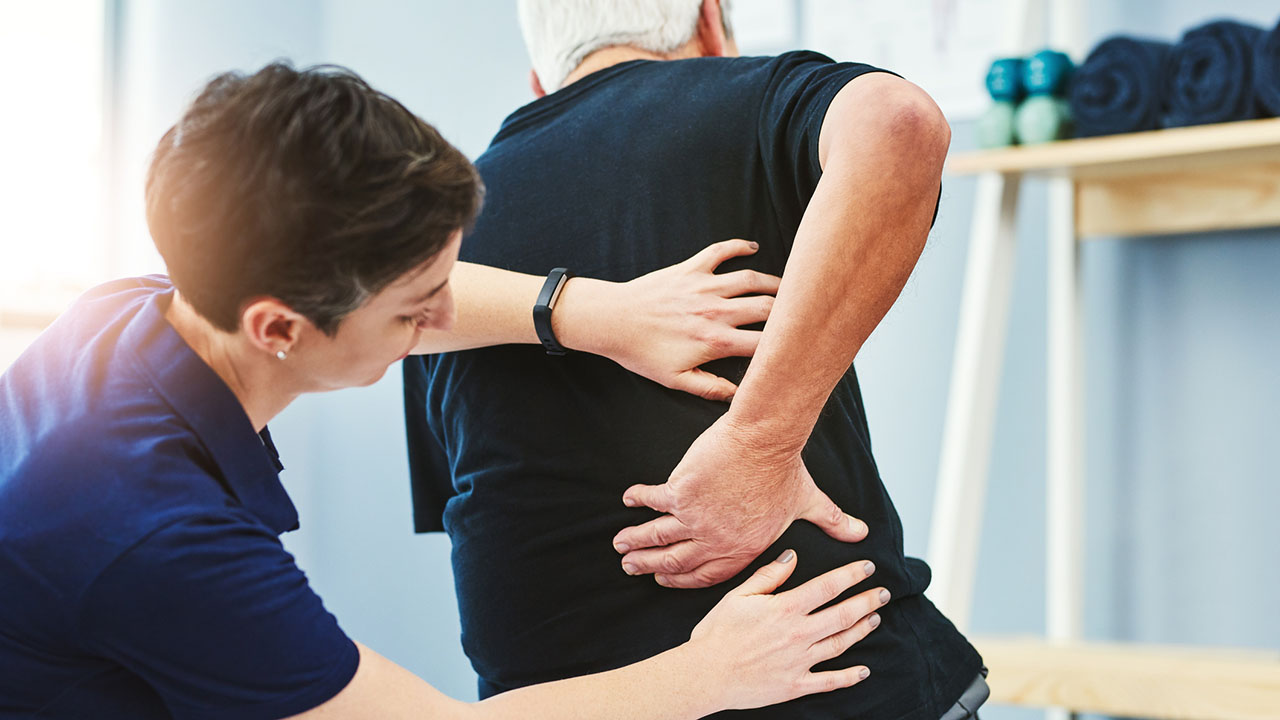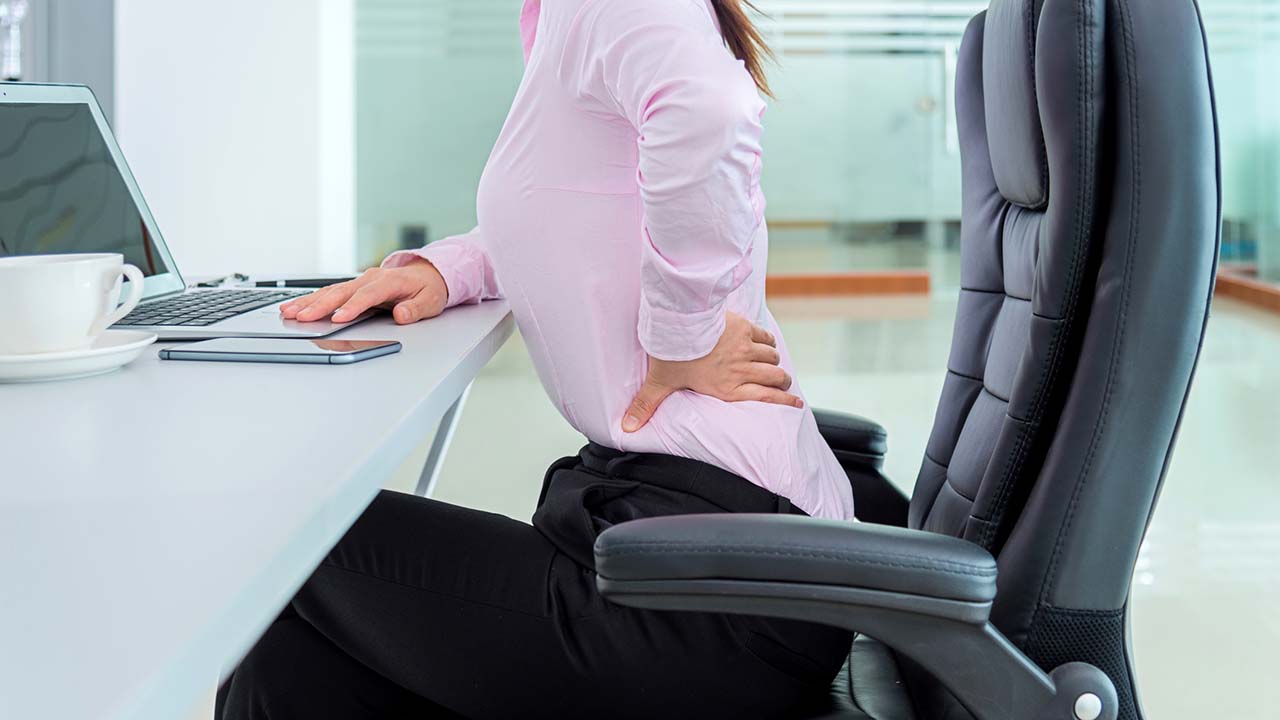Ouch! A kink, a crack, a pull in your back. Is it serious or could it be a muscle strain that will probably go away in a few days? Back pain is one of the most common medical problems in the U.S. and it often unknowingly happens when we take on a chore or exercise that we don’t do on a regular basis.
What causes back pain?
There are a few common tasks that may put people at risk for back pain, including:
- Lifting incorrectly.
- Intense but sporadic exercise – such as one night a week or on the weekends.
- Repeated, prolonged sitting – sitting in the same position for longer than 30 minutes at a time.
- Poor posture.
- Sleeping on a poor-quality mattress and/or pillows.
Other causes of back pain may include:
- An accident or fall.
- Age. The likelihood of back pain increases as we get older.
- Obesity.
- Inactivity.
- Stress.
- Family history of medical conditions or disorders that cause back pain.
- Existing spine problems, such as:
- Disc issues – disc disease, herniated or ruptured discs.
- Vertebrae issues – spondylolisthesis, fractured vertebrae.
- Spinal stenosis.
- Scoliosis.
- Other medical conditions such as arthritis, osteoporosis, fibromyalgia, kidney stones, endometriosis, infections, tumors and pregnancy.
- Heavy lifting, pushing, pulling or twisting.
- Sedentary work, like desk jobs.
What are some things I can do at home to treat short-term back pain?
- Keep moving. The most effective treatment for unexpected back pain is engaging in light to moderate walking. Avoid long periods of rest. Even if you hurt or feel stiff. Break up resting and normal tasks with a short walk around the house, to the end of your driveway or around the block. This can be done several times a day to avoid stiffness and more pain. Staying active can also improve posture, which may help with pain.
- Apply ice. Back pain may be due to inflammation or swelling. Applying an ice pack to the sore spot(s) will help manage back pain by controlling the swelling in the area. A good rule of thumb for icing is “20 minutes on and 20 minutes off.” It is safe to apply ice for 20 minutes at a time, as long as there is a protective layer between the ice and your skin (such as a T-shirt, pillowcase or thin towel). Then, take at least a 20-minute break, or longer, before icing again for 20 minutes. This can be repeated as often as tolerated.
- Apply heat. Heating pads can help soothe an aching back by increasing blood flow to enable healing. If you choose to use a heating pad, be sure to test the temperature and avoid direct contact for too long in order to prevent burns. If possible, rotate heat and ice for 20 minutes at a time, and always end with ice.
- Talk to your doctor about over-the-counter pain relievers. Acetaminophen (Tylenol), ibuprofen (Advil) or NSAIDs (Aleve) can help with back discomfort. Read the label to learn about the medication’s side effects and how to properly take them, and always talk to your doctor first – especially if you also take prescription medications.
- Avoid painful activities.
- It may be tempting to take less trips by carrying everything at once, but make multiple trips if you need to carry several things to avoid lifting heavy items.
- Try to change positions every 30 minutes when your back hurts - from sitting, to standing, to lying down, to walking. If you have long meetings at work, stand against the wall intermittently to avoid sitting for too long.
- Shoe comfort over style. Wear comfortable shoes and avoid wearing shoes with heels.
- Consider seeing a physical therapist to evaluate safe movements and exercise and to address any potential alignment concerns. A physical therapist can connect you to another specialist if necessary or you are not improving.
- Be mindful of your diet. What you eat can affect how your body feels and if you aren’t eating the proper foods, can even cause you pain. Foods that are high in grains, fruits and vegetables are anti-inflammatories and can make a big difference in how you feel physically. Ingredients such as dairy products, mean and sugars can increase inflammation and cause your back pain to get worse.
When should I see a doctor?
Most back pain resolves on its own within two to three days when following the at-home treatment ideas listed above. However, if back pain lasts longer than two to three days, it's important to take further steps.
If you experience any new pain along a pathway down in your leg, increased weakness, numbness or tingling, contact your doctor right away. Also contact your doctor if you have changes in your bathroom habits, fever or unplanned weight loss along with back pain.
Talking with your doctor is the best way to find out what is causing the pain in your back. Your provider will decide what treatment options are right for you. Treatment options may include:
- Prescription medication.
- Physical therapy.
- Osteopathic manipulative therapy (OMT).
- Chiropractic care.
- Anti-inflammatory injections.
- Surgery.
The sooner you see a medical professional about your back issue, the sooner the pain can be treated so you can live your life without limitations.




